At the Feet of the Andes
Eleven medical students serve and learn
- Warm smiles and greetings
In an impromptu speech, Ian (pictured), the M2 who came down with us, said, “cuerpos son cuerpos” (bodies are bodies) – in the end, no matter the lingual or cultural or even technological barriers, we are all just people and, if nothing else, our humanity connects us more essentially than anything else ever could.
- Day 1: The journey begins
To introduce ourselves to the city we walked around, exploring alleyways and plazas, ate some Chinese food, and eventually decided to climb to the Condor, an enormous monument on the top of a mountain a little more than 4000 meters above sea level (above 13,000 ft).
The thought of the climb exhilarated me at first, but proved to be much more of a challenge than I had expected. My lungs refused to adjust to the high altitude (read: low oxygen) environment, for which I had earlier begun taking medication. It was then—my pulse a thunderous 170 beats per minute—that I also remembered my exercise-induced asthma! And in case you don’t know me, let me tell you one thing—I hate being vulnerable, let alone showing it. Most of my good friends have never seen me shed a tear, and here I was bawling because my lungs weren’t cooperating. But thanks to the help of a few comrades, I persevered.
- Day 2: Carnival - Dancing!
We also began to appreciate the culture; we incidentally traveled to Puno during the celebratory time of Carnival, and were able to participate in a variety of local customs, including dancing in the streets, getting sprayed with espuma (foam), and ceremoniously chopping down a tree.
- Day 3: Our first rural clinic visit
Today we woke up excited to visit our first rural clinic. The physician we met there explained the vaccination regimen in place for kids, and the difficulties with compliance—young couples leave for the coast to find work, and rarely come back in time to continue the proper regimen for their children. Furthermore, the government is working to combat the birthrate of malnourished, underweight children. To achieve this, they provide food to pregnant women. But they have been unsuccessful because they forgot one simple element – women, pregnant and in need of food though they may be, will inevitably share the paltry nutrition they receive with their families. Food meant for one pregnant woman ends up in five bellies, so mom and baby still don’t get the proper nutrition. In general, the clinics concentrate on establishing prenatal care and moving births into medical settings. The former has been very successful. For the latter, they offer incentives (like free services or food), or even go so far as to mandate them, but there is a constant struggle with cultural beliefs.
- Day 3: Gorgeous, rocky beaches
After a clinic visit, we had the chance to explore a beach and climb a ridiculously large rocky structure. Natural beauty never ceases to amaze me, and climbing the rock was exhilarating, but worth every frightening tumble-scare. At the top we had an amazing view of the nature around us, and seeing the lake glistening dangerously below helped me ground myself mentally. It was the perfect place to reflect, and I regretted not bringing up a pen and paper with which to scribble my meager musings.
- Day 4: Donating the medical supplies
The rest of our group joined us in Llave for rounds the next day. We presented our donations of medical supplies to the clinic in a symbolic ceremony.
- Day 5: This isn't Michigan anymore...
We visited another rural clinic, and experienced first hand how potentially arduous it was to get from a village to Puno (the nearest location for higher medical care) – our rented van broke down halfway through, and was unable to climb the rest of the rocky path, so we had to go back to another village and get another. (Thankfully, we could afford the vans; I shudder to think of the pregnant women who sometimes have to walk from their villages to hospitals miles and miles away because they cannot afford the luxury of transportation).
- Day 5: Visiting more rural clinics
We got a better idea of what “care” actually meant: in the area we visited, there were about 25 clinics, but only 5 doctors and 4 midwives. Many nurses work in the clinics, but a lot of them fear their pregnant patients and the potential medical complications they bring with them. Some patients, too, try to hide their own pain and discomfort—a far cry from the histrionics sometimes seen in American hospitals. But still, the problematic prevalence of maternal mortality was constantly being addressed. To scare the importance of prenatal care into women, for example, public autopsies of those women who did not comply, and died, were conducted, in which all women were mandated to attend. You can’t say Peru doesn’t take its maternal mortality statistics seriously.
- Team Peru "Photo Shoot"
Another great aspect of these trips is the ability to get to know your own peers—and let me tell you, Team Peru bonded hard core. Too often we content ourselves with superficial interactions, as we often don’t have the time to dig deeper. Well, that, or it involves asking personal questions, which makes some people feel awkward. But on these trips, when you’re inoculated with a small group of people in a foreign environment, you find yourself able to ask questions that might be inappropriate in normal social context. Through personal conversations, I discovered the complexities of personalities that helped me appreciate each member of my group. It’s amazing how much you can learn by just paying attention to people’s stories, spending the time to ask the right questions, and really taking the time to hear their answers.
- Day 6: I'm on a boat!
After an exhausting few days we took some time to ourselves, so the group split up according to outside interests. Half of us wanted to climb another mountain (I’m hoping you can guess that I did not join this group), while the other half of us wanted to get on a boat and go somewhere. Luckily the tourist attraction of Los Oros, or the floating islands, allowed us to do just that. The boat ride itself was incredibly relaxing, as the brilliant sun shined radiantly upon us. The only thing I lacked was a nautical themed pashmina afghan.
A personal note of satisfaction came to me when the mayor’s wife asked another one of my team member’s if she could speak to me during our health fair. “I didn’t know women who,” at which point she motioned to my hijab, “could pursue educations.”
“Well,” I responded, somewhat at a loss for words, “here I am, in medical school.”
“I’m glad to have met you, and to have learned.”
- Day 7: The final day, the final project
It was my final day in Peru; I would have woken up in a bittersweet mood, except that 4:15 am is too early to feel any emotion. At some ungodly hour later, we left for Ácora, the site of our biggest project yet: our health fair. We went in, expecting people to be waiting for us, and to have a large area of space to ourselves. Instead, we arrived to discover that it was actually a huge market, complete with livestock and merchants and mud. Despite the last minute changes we had to make, the fair turned out to be a hit. The success cannot be measured merely by the 120 people we—along with our student counterparts in ACEM and the Peruvian physicians we brought along with us—saw that day, nor in the smiles of the children to whom we talked about healthy nutrition and gave toys. On our ends, we all marveled at our abilities to give preventative health education to Peruvian villagers in Spanish, and the amount we learned in putting the entire endeavor together. We worked as a team, in harmony with all that we had learned and the people with whom we had begun to form ties. It was a fantastic culmination to our incredible journey.
As part of the Student Alliance for Global Reach (SAGR), I traveled with 10 other medical students to Peru in order to serve, research, and learn in February 2010. We arrived in Puno, Peru after roughly 24 hours of transit, thrilled to have reached our destination unscathed. We began by rounding in and touring Puno Hospital. A variety of excellent speeches highlighted what the crux of our visit should entail: learning from each other. We acknowledged that our healthcare structures, education systems, and cultures were very different, but it was because of those very differences—and not in spite of them—that our partnership held value. In an impromptu speech, Ian, the M2 who came down with us, said, “cuerpos son cuerpos” (bodies are bodies) – in the end, no matter the lingual or cultural or even technological barriers, we are all just people and, if nothing else, our humanity connects us more essentially than anything else ever could.
During our time in Peru, we learned much about traditional Peruvian medicine—giving birth at home, without health professionals, in a series of ancient protective rituals. We also learned about how, even within the general Puno area, different villages had very different perspectives about family planning. While it was completely acceptable in one village, in others there was a societal concern that women would become promiscuous if provided with family planning resources, and the overall machismo disallowed their use. My experience in the hospitals and clinics made me reflect on the difficulties of seeing how the lack of resources translated to differences in health care practice and delivery. I was struck by a combination of frustration and shock, for example, when I saw doctors not wearing gloves while caring for certain patients, or not washing their hands before moving onto another. While in the US a great deal of care is placed on patient comfort and privacy, that was less of a concern in Peru; they would, in fact, pack students into rooms to enhance their learning. I acknowledge the dire need to train physicians, but I can’t shake the feelings wrenching through my gut when I looked at the doe-eyed patients who listlessly complied with the doctor’s commands to show the rashes on their hands or roll up their sweaters so we could examine their abdomens. I appreciate all the more the humanistic approach to patient care we emphasize here at UM. There is an essential quality of humanity we should never forget, especially as physicians.
The patients I encountered were some of the strongest people I met, never complaining about pain, even while being administered excruciating treatments. But this attitude can also be problematic–some healthcare workers just ask women if they feel any pain, and when the women respond in the negative, the workers sometimes forego physical exams which could otherwise have picked up on potentially serious complications. Even the children we encountered seemed to be made of smiles and rosy cheeks (sunburnt, actually), completely different from some of the spoiled American children I have encountered. We are worlds apart, in some ways, and they have a lot to learn from us. But we also have a lot to learn from them.
As part of efforts to give back to the community we gave talks and held a health fair. During the previous year’s visit, the students of ACEM (our partner medical student group, Asociación Científica de Estudiantes de Medicina (ACEM) at the Universidad Nacional de Altiplano (UNA)) had expressed interest in learning some biostatistics, so we translated some of our own curriculum into Spanish and taught them in lecture format, followed by working on problems in small groups. Teaching the concepts in another language proved quite a challenge, but a worthwhile one. It’s incredible to think about how we, just by learning a language, gain access and insight into people and cultures we could never achieve by mere translation.
Another great aspect of these trips is the ability to get to know your own peers—and let me tell you, Team Peru bonded hard core. Too often we content ourselves with superficial interactions, as we often don’t have the time to dig deeper. Well, that, or it involves asking personal questions, which makes some people feel awkward. But on these trips, when you’re inoculated with a small group of people in a foreign environment, you find yourself able to ask questions that might be inappropriate in normal social context. Through personal conversations, I discovered the complexities of personalities that helped me appreciate each member of my group. It’s amazing how much you can learn by just paying attention to people’s stories, spending the time to ask the right questions, and really taking the time to hear their answers.
Looking back, I’m flummoxed by how quickly time can fly. Moreover, I’m impressed by the amount we were able to accomplish in our short time. It’s incredible how motivated you can be when necessary; whenever I travel, I feel like I have the strength and energy of five people—a feat I cannot replicate once I return. I’m still amazed by how incredible my experience truly was. I learned about medicine, Peruvian healthcare and its culture, my teammates, and myself, personally and professionally. My interest in health care disparities has increased exponentially. I am grateful for the people I got to know, from Michigan and from Peru, for the improvement in my Spanish, and for the insights I gained. The value of these trips, I realize, is hard to gauge; but to the many of us who went, it was invaluable in our common experiences as rising physicians. Now, I am more able to appreciate the resources I have, and am more inspired towards my goal of serving as a health care professional in those communities that need it most. I feel honored to have had this experience, and to have grown from it.

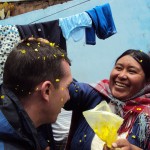



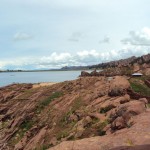
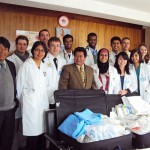
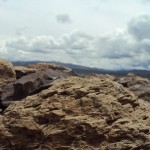

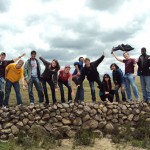

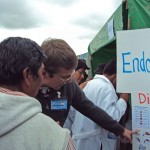
No comments yet.
RSS feed for comments on this post
TrackBack URI